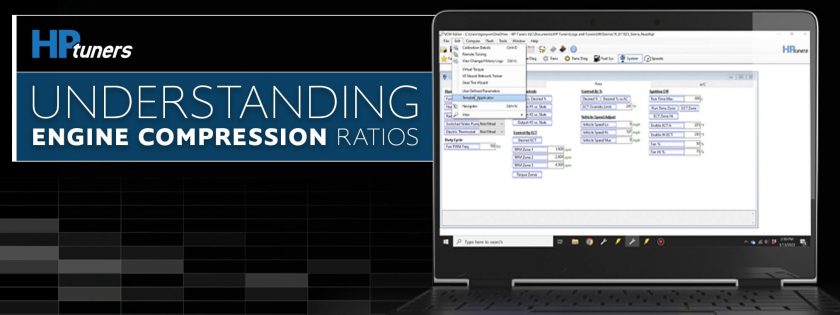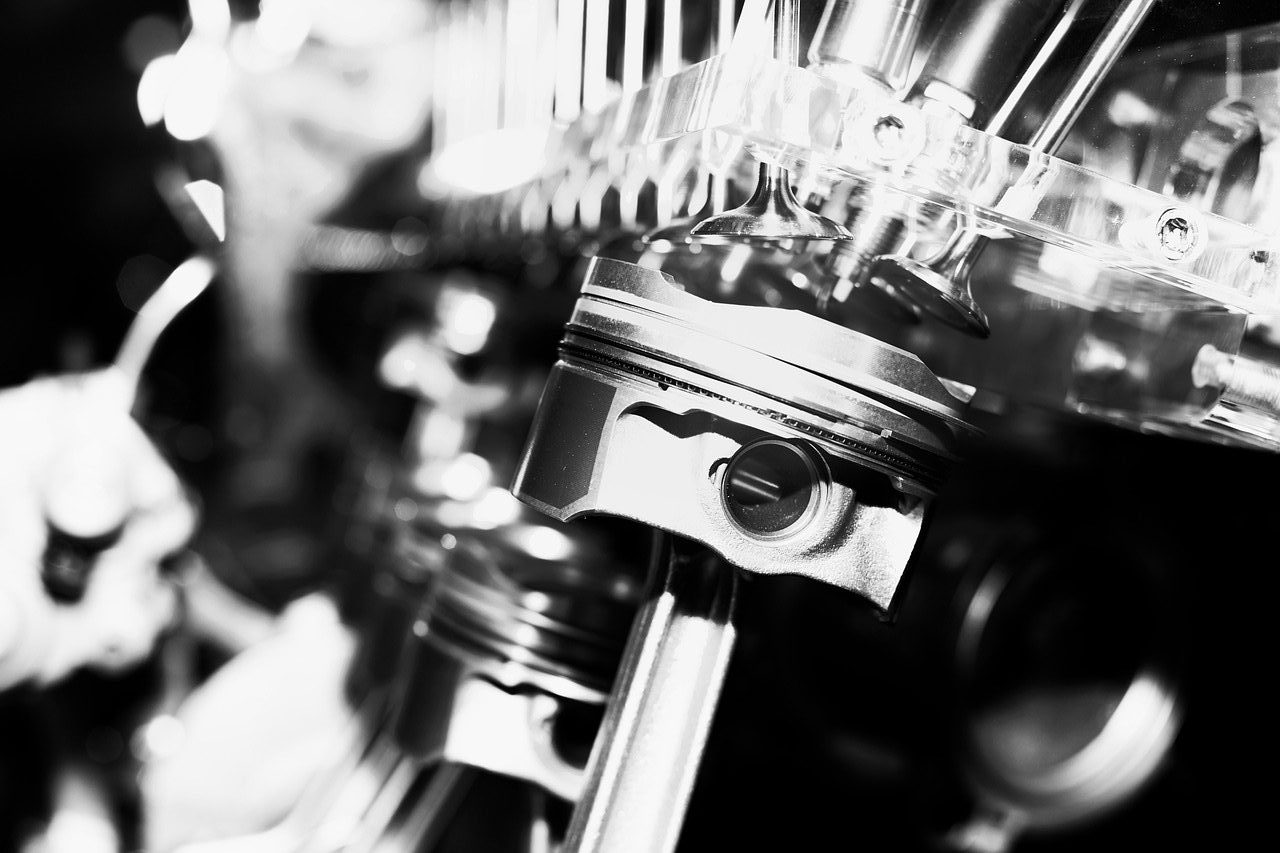Understanding Engine Compression Ratios
Published on: June 5, 2024Categories: Education

Compression ratios are fundamental to enhancing engine performance, understanding both static and dynamic compression ratios can give you an edge in fine-tuning your vehicle’s performance using HP Tuners products. Let’s discuss what they are and how they play a role in tuning.
What is Static Compression Ratio?
The static compression ratio (SCR) of an engine indicates the ratio of the total volume of a cylinder when a piston is at bottom dead center, to the volume when the piston is at top dead center. It’s a fixed value, determined by the engine’s design (Bore, Stroke, Cylinder Head Chamber design, piston design, camshaft specs/installation position) and characterizes engine performance. Higher SCRs typically mean more power and efficiency, as the engine can squeeze the air-fuel mixture into a smaller space, increasing the mixture’s pressure and temperature before ignition. However, increased SCRs can lead to a narrow tuning window and an increased potential for component failure. It’s important that higher-quality fuels and more powerful ignition systems are used to combat the higher combustion pressures.
The calculation for SCR is straightforward:
Static Compression Ratio (SCR) = (Total Displacement Volume + Total Compressed Volume) / Total Compressed Volume
where displacement (swept) volume, is the combination of cylinder volume of all cylinders and the compressed volume is equal to the sum of the engine deck clearance volume, head gasket volume, piston volume, and combustion chamber volume.
Here we have three calculators for determining the Displacement Volume, Compressed Volume and finally compression ratio. Feel free to use these as you learn what each of these functions are and how they play a role in the dynamics of your engine.
Displacement Volume (BDC) Calculator

The Role of Dynamic Compression Ratio (DCR)
While SCR provides a static measure, dynamic compression ratio (DCR) accounts for real-world operating conditions, particularly the timing of the intake valve closure. DCR affects how the engine breathes and performs under load, influenced heavily by camshaft profiles and mechanical timing adjustments. The intake valve’s closing timing during the compression stroke impacts the actual compression experienced in the cylinder.
The DCR can be lower than the SCR due to the intake valve remaining open at the beginning of the compression stroke, allowing some of the air-fuel mixture to escape back into the intake manifold. This phenomenon, affected by the camshaft profile, can lead to variations in engine power output and efficiency.
Practical Implications
Understanding and optimizing SCR and DCR are critical for achieving desired engine performance. For engine builders, manipulating these ratios through modifications like changing camshafts, adjusting valve timings, or altering piston designs can lead to significant gains in power and efficiency. However, it’s also essential to manage the increased combustion pressure and temperature that come with higher compression ratios to avoid engine knock or pre-ignition, potentially damaging the engine.
In tuning applications, especially with turbocharged or supercharged setups, balancing SCR and DCR becomes even more crucial. Higher compression ratios leave a narrower tuning window, and you may find that forced induction engine builds will have a lower compression ratio than its naturally aspirated counterpart. Adjustments like these can help you better manage the boost pressure effectively, optimizing the engine’s power output without compromising reliability.
Conclusion
Compression ratios, both static and dynamic, are pivotal in defining an engine’s performance characteristics. Through HP Tuners’ software and hardware solutions, tuners have the tools to monitor and adjust around these characteristics, enhancing engine efficiency and power in line with the vehicle’s operating conditions and performance goals.
For enthusiasts and professional tuners alike, mastering these concepts through EFI tuning is an invaluable skill, allowing for greater control over engine performance and a deeper understanding of automotive engineering principles.
Throughout your tuning journey with HP Tuners, utilize our Help Center, Forum, Educational YouTube videos, and technical support team for any help you may need.

